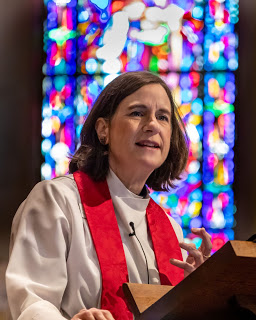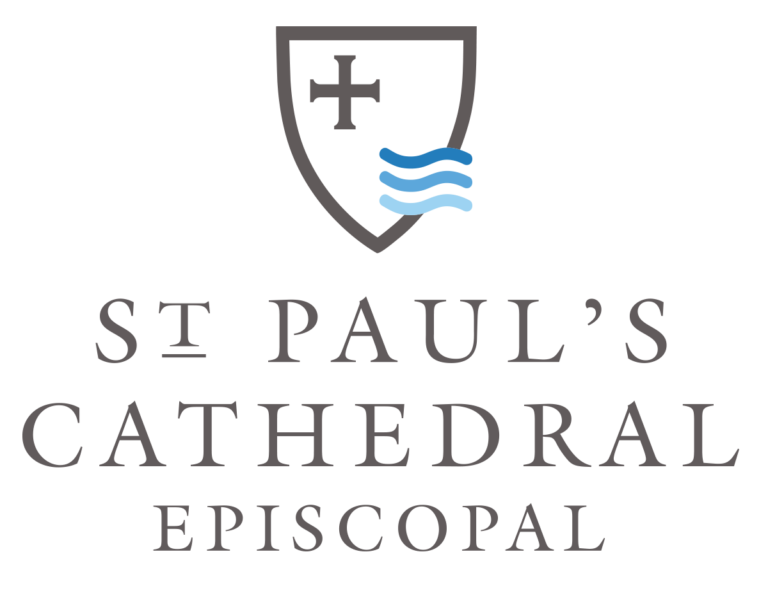
Watch this sermon on YouTube (Click Here)
February 19, 2023, Last Sunday after Epiphany
Penelope Bridges
When I started thinking about this sermon, I started with the word Transfiguration. We call the last Sunday before Lent Transfiguration Sunday because, each year on this Sunday, we hear the story of Jesus on the mountaintop, conversing with Moses and Elijah, bathed in heavenly light, proclaimed as God’s beloved son. Jesus is transfigured in this moment, transformed in the eyes of his disciples from a wise teacher and healer to the one chosen by God to fulfill all that the ancient prophets foretold. It is a profound moment of Epiphany for those who love and follow Jesus.
Think about the word: transfiguration. What other words starting with trans come to mind? Transgender – to undergo a profound change in one’s identity. Transplant – to move a growing thing from one place to another. Transubstantiation – the belief that ordinary bread and wine are changed into the body and blood of Christ. Translate – to take a set of words and change their language. Transgress – to turn away from God’s path and take the wrong route. Always a change is involved.
And a transfiguring moment is a moment when eyes are opened in new ways, when hearts are changed and God’s glory is glimpsed. At this point in Matthew’s Gospel, Jesus has just started his journey to Jerusalem. He is doing everything he can to prepare his friends for what awaits them there. He has started to predict his Passion. And, to give them the strength for what lies ahead, now he has given them a vision that confirms that he is the beloved of God.
If you hear some similarities between today’s reading from Exodus and the Gospel passage we just heard, it’s not a coincidence. St. Matthew is intentional in wanting to remind his listeners of Moses receiving the Law on a holy mountain, as he tells the story of Jesus receiving the endorsement of Moses, and Elijah, and most significantly of God, in his version of the Transfiguration story. Matthew’s portrait of Jesus paints him as the new Moses, the one long awaited by God’s people, fulfilling the ancient prophecies. A number of details, most of which are not in these verses, make the connection: the bright cloud and Jesus’ face shining like the sun recall Moses’ face when he came down the mountain with the Law; the trusted companions that climb the mountain with Jesus recall Joshua’s accompaniment of Moses. But there is a key difference between Moses and Jesus, that Matthew cleverly points out.
If you’ve read the whole story in Exodus you’ll remember that the people were terrified of the divine power. They dared not approach the presence of the Lord: only Moses could safely have conversations with God. And in the Gospel, we hear that the disciples, Jesus’ companions, were equally afraid when they realized they were in the presence of the divine: they had been well taught that God was dangerous at close quarters. But here’s the big difference: Jesus, as the human manifestation of God, reaches out and touches his friends, telling them to get up and not be afraid.
The word that the Gospels use for the touch of Jesus is a word that can also mean to light up or ignite. The thing or person that is touched in this way is changed. Often it’s used to describe the way Jesus touches someone to heal them; but it has broader meanings too: in Luke’s Gospel a woman touches a lamp to light it. In the first letter of John the word is used to refer to someone being touched by evil. In the Torah, the five books of the Law of Moses, God warns the people not to touch things that are unclean, or things that have been made holy, or they will die. This supernatural touch can heal or harm. It can start a fire; it can destroy that which it touches; it can change a life.
The human touch, offered in the context of love, is a healing touch. In contrast to the dangerous God portrayed in the Hebrew Scriptures, Jesus, God with us, who was named as such by the angel at the very beginning of Matthew’s Gospel, is able to enter into close relationship with human beings, to be among us without putting us in danger. His touch can only heal. We no longer have any need to fear God’s touch, because in Jesus God is revealed as pure love.
The power of the healing touch cannot be over-estimated. This is why we offer the laying on of hands when we offer prayers for healing or when we hear a private confession. This is why the physical presence of another human being can be so powerful in moments of crisis or pain. This is why clergy show up in hospital rooms and at deathbeds. It’s why Stephen Ministry is so effective, and why the act of receiving Communion means so very much. When we reach out to each other in Jesus’s name, we are re-enacting that moment when Jesus came and touched his friends, saying “Get up, do not be afraid.”
Transfiguring moments are fleeting, and sometimes we forget them as time goes on and as the ordinariness of life piles up. But the memory of such a moment can lift us up when we are in a dark place. It can be almost like a healing touch, a spark ignited in the darkness. So it’s important to recall those moments, in whatever shape they come – something in nature, a relationship, a thing of great beauty, a deeply moving experience. Sometimes when I am chanting the Eucharist I am keenly aware of the glory of God in our worship. I see it in the smiles and chuckles of my grandson. I see it when I wake up in the morning and there’s a spectacular display of color in the eastern sky.
Share a memory of a moment when you beheld the glory of God. Pair off and talk for one minute each.
Jesus has been issuing dire warnings of what is to come. Now he gives his closest friends a glimpse of why they should stick with him despite the pain that is to come. In the same way we can hold onto these memories of experiencing God’s glory, to lift us up when life gets hard. If you are planning a Lenten spiritual discipline, maybe the memory you just shared will become a tool you can use when you are tempted to break the discipline. If you are preparing for surgery or a difficult conversation, maybe this memory will lighten your burden. And maybe the person you shared the memory with will remember too and hold you in prayer.
This cathedral community is a vessel in which to hold transfiguring possibilities. We walk this path of faith hand in hand with one another, sharing both our mountaintop experiences and our deep losses and griefs. As we step into the holy season of Lent this week, we will walk together on the path to Jerusalem, and we will hold fast to the memory of Jesus shining on that mountain, and of him reaching out to his fearful disciples. So let’s follow his instructions: get up, do not be afraid, as we set out together on our wilderness journey. Amen.

